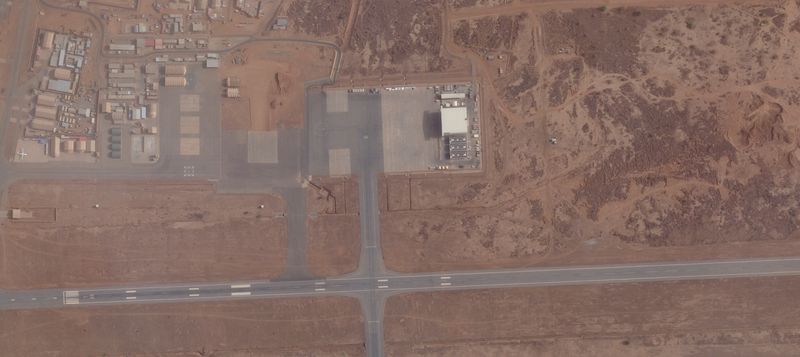On May 8 and 9, there were several solar flares — coronal mass ejections (CME for short), where charged particles are launched from the surface of the Sun in a huge explosion and race through space like a solar storm. There is a buzz in the media jungle because there has also been a particularly strong solar flare.
It has been reported that these solar storms may reach Earth in the next few days Space weather forecasts from the US National Weather Service (NOOA).. A stronger solar storm is expected in North America. But this cannot be predicted with certainty. We cannot say in advance whether we in Bavaria will notice anything about this.
Why are there so many sunspots and solar flares now?
Solar flares are currently very common because the Sun is currently approaching its peak activity – as it does every eleven years. What this means for the Sun: Increasingly strong magnetic fields inside the Sun cause sunspots to appear on the surface — dark spots we can observe and count from Earth.
The more active the sun is, the more common sunspots become. They arise as strong magnetic fields push solar material off the surface of the Sun in huge arcs. In extreme cases, there is a kind of magnetic short circuit that throws all matter into space – Solar flare.
Why doesn’t every solar flare turn into a solar storm?
The answer is very simple: coronal mass ejections rarely occur exactly toward Earth. Solar flares occur all around the Sun. Electromagnetic particles of solar matter are launched into space in random directions. Even if we observe a sunspot pointing toward us: the Sun rotates on its axis just as the Earth rotates on its axis — so an eruption could occur if the sunspot was located directly to the back of the Sun, from our perspective.
Even if a solar flare goes exactly in our direction, it doesn’t always hit Earth. Sun particles travel about 150 million kilometers from the Sun to the Earth. Depending on the speed of the particles involved, it usually takes two to three days. And only at the last moment can it be said whether the solar storm in question will actually hit the Earth.
Jens Berdermann of the German Aerospace Center (DLR) He watches solar storms closely because he wants to be able to warn in time if necessary: “The problem is that at the beginning of the event on the Sun you don’t know yet whether the Earth will hit or not. There is a point between the Earth and the Sun where we have one satellite that has Solar Wind Observers But unfortunately at 1.5 million kilometers away, that’s just the last little bit [der gesamten Strecke, Erg. der Red.]. “We only have an expected time of half an hour to three-quarters of an hour before the disturbance reaches the Earth’s atmosphere.”
The most beautiful solar flare effect: the northern lights
When a solar storm reaches Earth, one of the most beautiful weather events ever occurs: Northern lights dance In the sky, the aurora borealis appears in bright colors. However, the celestial phenomenon is also rarely called the “Northern Lights”. The Earth’s atmosphere and Earth’s magnetic field protect us very well from the storm of electromagnetic particles and direct charged solar particles toward the Earth’s poles. There, it penetrates the Earth’s atmosphere and causes its various atoms to glow: the northern lights are generated.
Because the sun is nearing its peak activity, we have a good chance of seeing the northern lights here in Bavaria in 2024. But they rarely appear this far from the Arctic Circle. According to NOOA estimates, the current outbursts can definitely be felt at 40 degrees and south latitude.
What are the consequences of a solar flare on electricity grids and the Internet?
On the other hand, elements orbiting outside the Earth’s magnetic field and atmosphere are unprotected when struck by a solar storm. Individual satellites, for example, can malfunction or be damaged if they are bombarded by high-energy solar particles. Navigation systems can be temporarily disrupted, and power grids can collapse locally due to the impact of strongly magnetic solar particles.
Berdermann of the German Aerospace Center (DLR) explains what this could mean: “Especially these days, when you have widespread power outages, you need rescue workers relatively quickly because panic may arise. And these rescue workers need “Two things are very urgent: this is very precise navigation and good communication.”
The more complex technical interaction on Earth becomes, the more dependent it is on satellite technology or the more vulnerable it is to magnetic interference, the more sensitive our daily lives become to solar storms. “If we lived as we did 100 or 150 years ago, we wouldn’t have to worry at all,” he explains. “Because the atmosphere is thick enough and the magnetic field is strong enough to repel the most powerful solar storms.” Hardy Peter of the Max Planck Institute for Solar System Research.

“Alcohol buff. Troublemaker. Introvert. Student. Social media lover. Web ninja. Bacon fan. Reader.”






More Stories
How Icarus almost lost his wings
Meerkats say a lot – but don’t always expect the answers – science
Losing the importance of academic libraries – open access in the sciences – a dubious promise of salvation